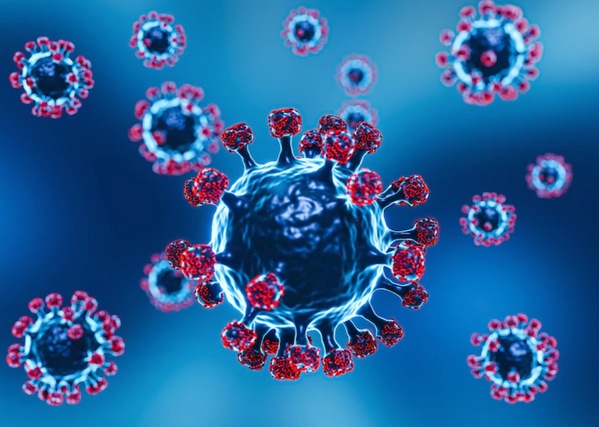Time Shows That The ‘Paranoid’ People Were Correct About COVID
January 23, 2023
We are now three years after the COVID-19 apocalypse began, and the CDC and WHO still refuse to acknowledge that the virus was created in and escaped from the Wuhan Institute of Virology (WIV). But they, along with all our institutions, have lied so often and so egregiously that 72% of the public doesn’t believe them. If nothing else, that is a very positive sign.
The evidence for the lab leak is as overwhelming as the evidence for a zoonotic origin is non-existent. For anyone trained in the art of biology to deny the lab origin betrays either deceit or, worse, willful ignorance.
Here I examine just three facts that together, if not singularly, prove dispositively that SARS-CoV-2 was a man-made lab creation. Not least of which is that they told us exactly what they were going to do.
Viruses are obligate intracellular parasites composed of genetic material—codons that specify the specific amino acids (there are 20) used to construct proteins—that hijack the machinery of the cell to produce more viruses.
This is no easy task and, to do so, viruses are extremely specialized and highly specific to their host. Viruses can and do randomly mutate; that is, they undergo random changes to their genetic code that can give them fitness in another host, albeit infrequently. Once they get a foothold in a new host, they continue to evolve by natural selection, making themselves better adapted to reproduce in their new host.
One key factor for a virus to be successful in a new host is to have a highly tuned receptor binding domain (RBD). The RBD allows the virus to recognize the host cell, bind to it, and get inside. In SARS, the RBD is 201 codons long. Jesse Bloom of Caltech analyzed the RBD codon sequence to determine what sequence would maximize binding to human cells. Of the 4000 possible combinations, SARS-CoV-2 showed up on day one over 99% optimized—only 21 codons short of perfection. As a verification of the validity of Bloom’s work, one of those 21 codons was later found in the more contagious Omicron variant to have mutated to Bloom’s prediction.

Image: COVID by freepik.
To put this in context, when SARS-CoV-1 crossed over to humans, its RBD was only 15% optimized, and there is a long chain of documented mutations in its RBD that eventually gave it the ability to be transmitted from human to human. How could SARS-CoV-2 have been so pre-perfected?
Ralph Baric of UNC, a co-author of several papers with the WIV on bat coronavirus, experimented with transgenic mice — mice genetically altered to have humanized lung tissue — as early as 2005 to demonstrate they could be infected with human coronaviruses. In his statement before Congress, Dr. Steven Quay testified that “the WIV has acknowledged that for several years they’ve worked with humanized mice developed in Dr. Ralph Baric’s laboratory.”
Humanized mice are the perfect vehicle for researchers to develop viruses optimized for human infectivity. Quay continued, “a commonly used gain-of-function method to optimize the COVID virus would have been by serial passage in a laboratory on a humanized, genetically modified mouse that can develop a human-like pneumonia. You infect the mice, wait a week or so, and then recover the virus from the sickest mice. Then you repeat. In a matter of weeks this directed evolution will produce a virus that can kill every humanized mouse.”
Once bound, there is still a highly complicated molecular ballet the virus must perform to gain entry. One vital step is the cleavage of the spike protein, which activates viral fusion with the cell membrane. Many viruses, including the deadliest, like Ebola, have furin cleavage sites (FCS) in their spike proteins to facilitate cleavage. However, in the clade of viruses containing SARS-CoV-2, Sarbecoviruses, none had an FCS…until now.
Since the effectiveness of the FCS was demonstrated in a 2004 paper, inserting it into viruses to increase infectivity has long been a staple of gain-of-function researchers. As early as 2006, FCS modifications were being made: “We show that furin cleavage at the modified R667 position generates discrete S1 and S2 subunits and potentiates membrane fusion activity.” Baric teamed up with the WIV and submitted a proposal to DARPA for funding to continue FCS work: “We will analyze all SARS-CoV gene sequences for … potential furin cleavage sites.”
If the multitude of papers and proposals telling us they are inserting FCS isn’t enough, there is also a molecular fingerprint to their handiwork. There are several ways to create an FCS, but they all include adding the amino acid arginine (Arg) at the site. Six different codons will specify an Arg, but in Sarbecoviruses, Nature prefers some and disfavors others. The codon used in SARS-CoV-2, CGG, is the least common of the six, representing just 1.5% of the total Arg codons. But wait: They inserted two of them, back to back. This is not surprising because CGG is the codon widely used in labs for Arg for over a decade.
When virologist and Nobel Prize winner David Baltimore first saw that the FCS was inserted in SARS-CoV-2, he said it “was the smoking gun for the [lab] origin of the virus.” To his credit, even with the vicious condemnation by his institutional betters, his later retraction was hardly a retraction:
[I] should have softened the phrase ‘smoking gun’ because I don’t believe that it proves the origin of the furin cleavage site but it does sound that way. I believe that the question of whether the sequence was put in naturally or by molecular manipulation is very hard to determine but I wouldn’t rule out either origin.
It is almost comical to read the fact check pages declaring the FCS insertion “factually inaccurate” with half-truths: “The CGG CGG genetic sequence and furin cleavage sites also exist in naturally-occurring viruses.”
True, the CGG codon pair does exist, rarely, in other coronaviruses, but not the Sarbecovirus clade, not the Pangolin viruses often alluded to as the source, nor any of the closely related bat viruses. And in the coronaviruses with a CGG codon pair, it’s not located in the FCS. And the same is true of FCS itself. Yes, some coronaviruses have FCS, but again, not any in the Sarbecovirus clade. There are literally 1000 years of evolution between coronaviruses that have FCS and the Sarbecovirus clade.
As powerful as the RBD optimization and FCS insertion are for the lab origin, both pale compared to the molecular fingerprint left by lab codon optimization. I already mentioned that different codons can code for the same amino acid and that Nature prefers some codons over others. Well, it turns out, so do labs. As long strands of RNA are fed into the cellular machinery to be translated into proteins, the RNA’s secondary structure, depending on the specific codons, can form internal loops impeding translation. Naturally, labs favor codons that avoid this problem as long as they code for the same amino acid.
Consequently, as standard practice, researchers optimize their choice of codons when synthesizing genetic material. The closest genetic match for SARS-CoV-2 is a virus, RaTg13, that killed 6 miners exposed to bat guano in a cave in China’s Yunnan Province in 2012 with symptoms nearly identical to Covid. Analysis of the coding regions for the spike protein in both viruses yielded 200 mutations, all of them synonymous. That is, the codon was changed but still coded for the same amino acid.
Every time there is a mutation to a codon, there is only a 15% chance it will be synonymous. The likelihood that 200 synonymous mutations occurred by chance is so low it wouldn’t be expected to happen in the expected lifetime of the universe. Clearly, the WIV used codon optimization in creating SARS-CoV-2.
There is much more proof, especially the modifications to SARS-CoV-2’s ORF8, endowing it with the diabolical ability to be transmitted asymptomatically, but looking further, at this point, is superfluous.
Six million dead worldwide, the entire world economy ravaged, trust in our institution destroyed, and all because cavalier gain-of-function researchers in Wuhan, financed and assisted by the U.S. government, created and accidentally (at least, we hope) unleashed its chimeric Frankenstein pathogen into the world—all in the name of science. Many of the world’s worst have done less damage in the name of genocide and conquest.
Huck Davenport is a pseudonym.



